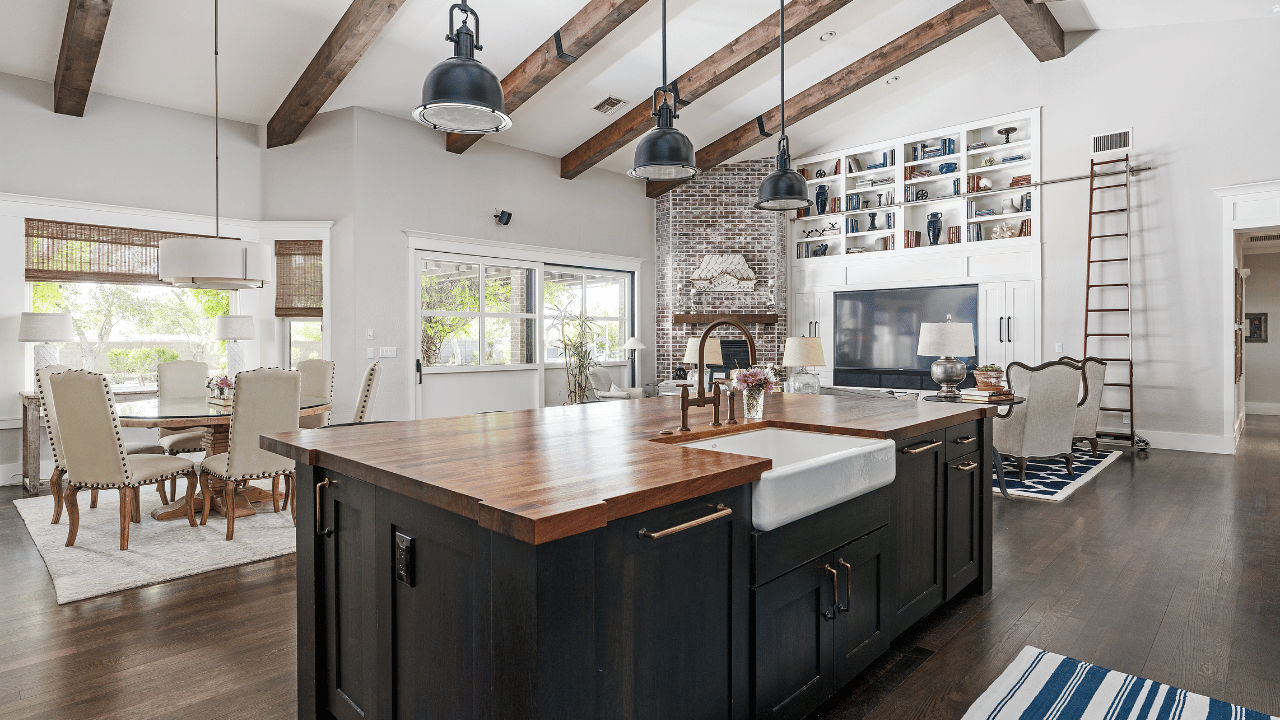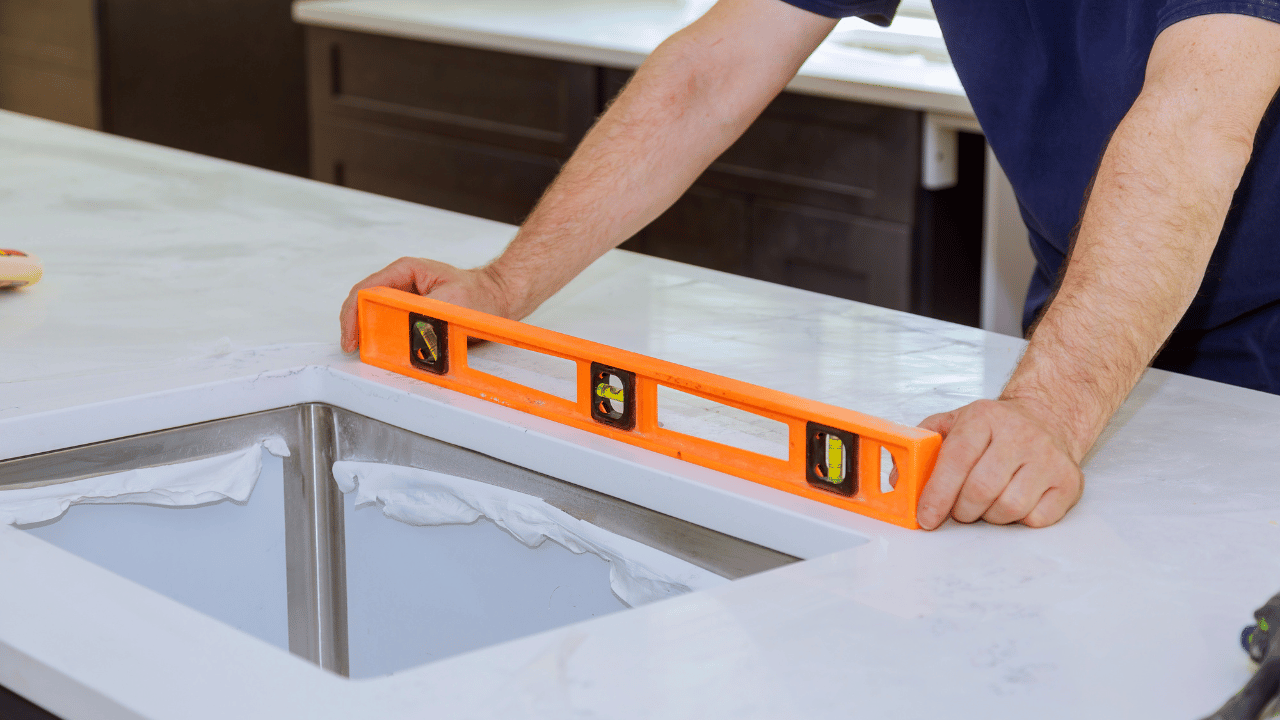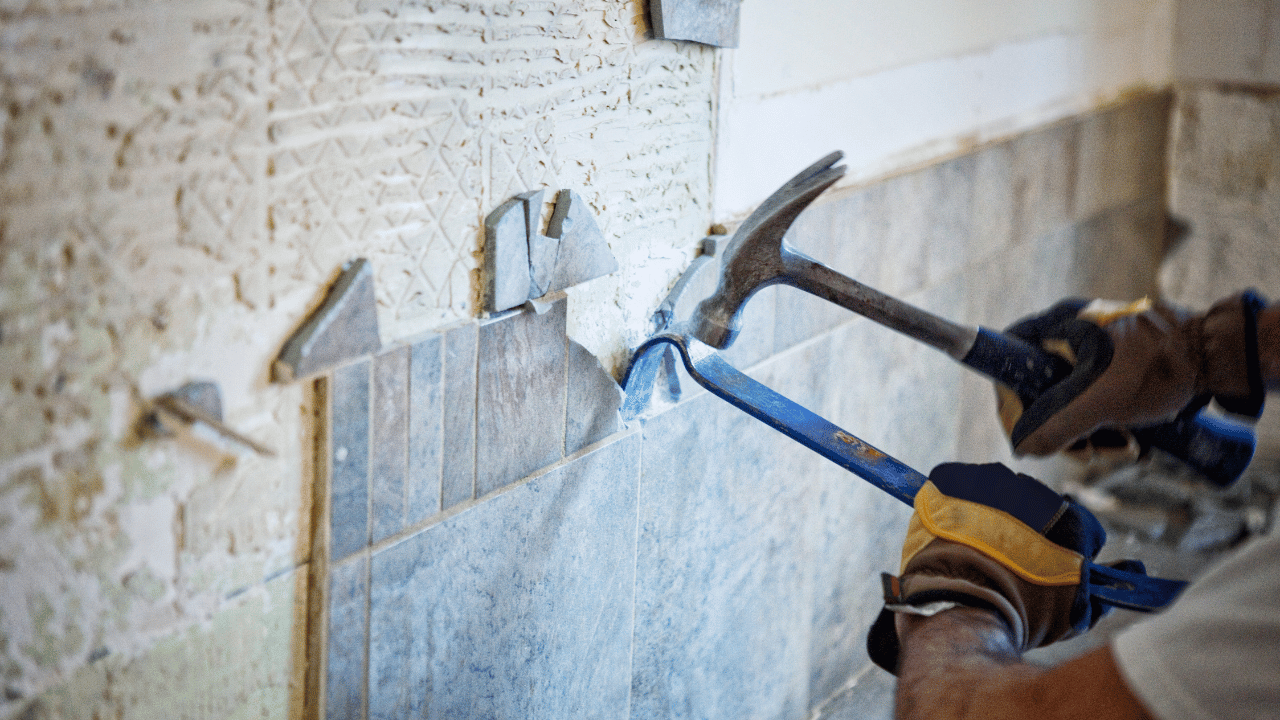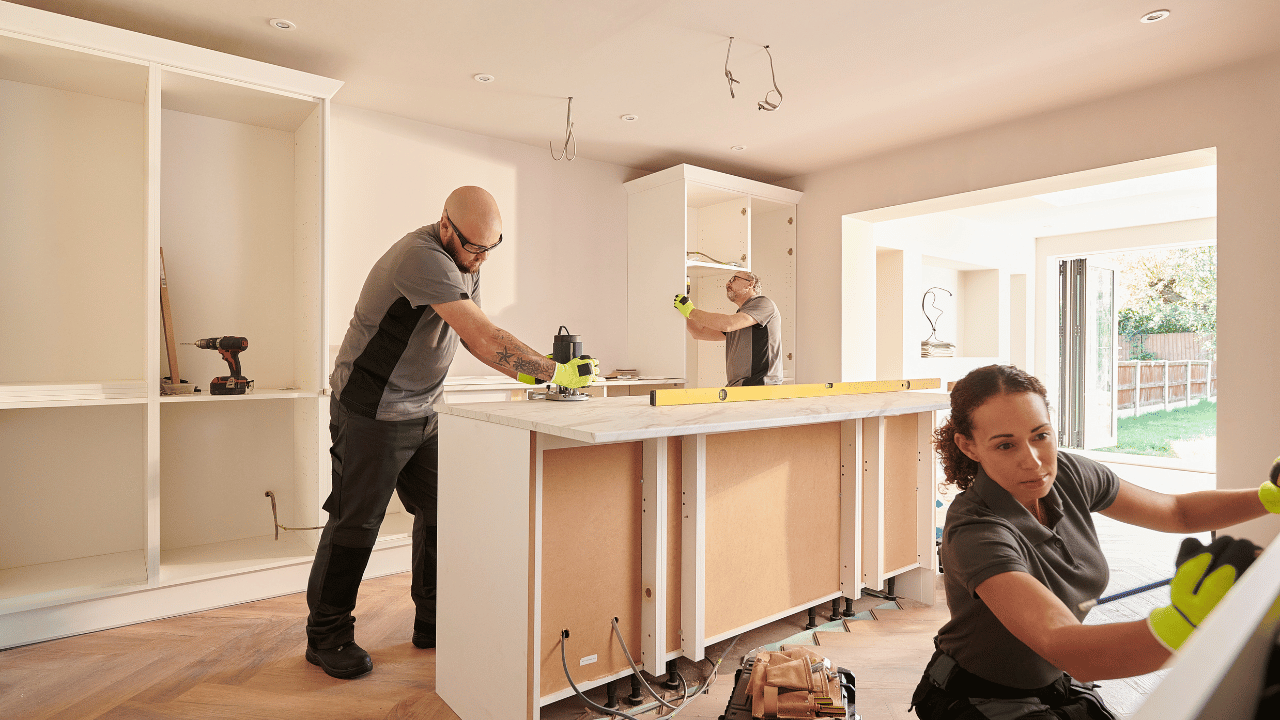Last Updated on September 7, 2023 by Pro Handyman Australia – Editorial Team
When envisioning your dream home or considering a revamp of your current space, the kitchen undoubtedly stands out. As a hub for numerous critical activities such as cooking, dining, entertaining, and family discussions, the layout of your kitchen should be both aesthetically pleasing and functionally efficient. Given that the kitchen often poses the most intricate and costly challenges in home construction or renovation, ensuring every aspect is perfected from the outset is essential.
Beyond Aesthetics: Function and Flow
While captivating finishes and state-of-the-art appliances undeniably contribute to a kitchen’s appeal, functionality remains paramount. A thoughtfully designed kitchen goes beyond aesthetics; it provides a safe, accessible, and efficient space tailored to your daily activities. Balancing elements like appliances, storage provisions, electrical fittings, plumbing systems, and pedestrian pathways can be a complex task, underscoring the importance of strategic design.
Foundational Aspects of Kitchen Design
To ensure your kitchen perfectly caters to your needs while also being safe, here are some fundamental guidelines to bear in mind:
Appliance Placement: Positioning your appliances strategically can boost efficiency and safety. For example, situating the stove, refrigerator, and sink in a triangle formation can streamline your cooking process.
Storage Solutions: Efficient storage not only helps in organizing kitchenware but also enhances accessibility. Design storage areas in a manner that minimizes excessive bending or reaching, thus optimizing ergonomics.
Electrical and Plumbing Considerations: Ensure that power outlets, switches, and plumbing fixtures are conveniently placed. This prevents potential hazards like water-electricity contact and makes daily tasks smoother.
Pedestrian Pathways: Design walkways to be spacious enough to facilitate smooth movement, especially in high-traffic areas or when multiple people are working simultaneously.
Whether you’re constructing a new home or revamping an existing kitchen, understanding and implementing these foundational design principles is crucial. Use this guide as a reference to ensure your kitchen is not only a beautiful heart of the home but also a safe and efficient workspace.
What you need to do before planning a kitchen renovation
Realistic Financial Planning
When contemplating a kitchen renovation, it’s essential to be pragmatic about the costs involved. Larger projects tend to overrun both in terms of time and money. To protect against unforeseen expenses, consider setting a budget that’s a tad conservative, leaving some room below your absolute maximum. Allocating an additional 10 to 20 percent of your budget for unexpected costs can save you from unwanted surprises down the road. It’s wise to have a financial cushion—no one wants to be stuck searching for more funding halfway through a project or be left with an incomplete kitchen due to cash constraints.
Informed Decisions through Research
Prior to making any commitments, visit kitchen showrooms and home stores. This will give you a clearer understanding of the prices of various items, allowing you to identify what you both need and can afford. Moreover, attending local home tours offers a unique opportunity to engage with other homeowners, gaining insights from their kitchen designs and renovation experiences.
Accounting for the Unforeseen
Beyond the overt costs of a remodel, one must also factor in labor charges, material expenses, taxes, and potential delivery or shipping fees. These seemingly small costs can accumulate rapidly and must be integrated into your budgeting strategy. Additionally, assess the steps in the renovation process that you might be capable of handling personally. Tackling even a few tasks on your own can lead to substantial savings.
Prioritizing Quality
Whenever possible, invest in top-tier materials. For kitchen remodels, focusing on superior quality ensures you benefit from functionality and, if ever needed, offers a boost in resale value. Premium cabinets, countertops, and appliances are not just visually appealing—they tend to have a longer lifespan, meaning you’re less likely to undergo another renovation soon. A savvy approach to achieve quality on a budget involves exploring second-hand materials. By doing so, you might secure higher-end items at a fraction of their retail cost. For instance, consider the possibility of rejuvenating older cabinets procured from businesses specializing in reused materials, or hunting for luxury items from online sellers parting with them.
Balancing Needs and Desires
While it’s easy to get swept up in the allure of cutting-edge gadgets and top-of-the-line appliances, it’s vital to differentiate between necessities and luxuries. Opt for trusted and essential items you’re certain to utilize frequently. Bear in mind that every added appliance can incrementally increase your utility bills. Additionally, more appliances translate to greater maintenance demands, both in terms of effort and finances.
The Art of Practical Kitchen Design
The kitchen, arguably the heart of any home, demands a blend of functionality and aesthetics. Reflect upon your current kitchen’s dynamics, assessing its strengths and limitations. Recognizing what aspects currently work for you and what could be enhanced will lay a solid foundation for your renovation. One time-tested strategy is the implementation of the classic work triangle: positioning the sink, refrigerator, and stove—the three most-used kitchen features—in a triangular arrangement. This design minimizes unnecessary movement, optimizing efficiency.
Furthermore, the number of individuals frequently working in the kitchen simultaneously should influence your layout. If your kitchen often witnesses multiple cooks, introducing additional workstations might be worthwhile. Given ample space, integrating a kitchen island or a mobile cart—which can be conveniently tucked away when not in use—offers added flexibility.
Optimizing Space and Convenience
Partnering with a competent remodeling contractor ensures safety-centric layouts. However, orchestrating a space that resonates with your day-to-day convenience rests primarily on your shoulders. Here are some tailored pointers to guide your space planning:
- Countertop Calculations: Aim for a minimum of 36 inches of counter space dedicated to food preparation, flanked by at least 24 inches on one side of the sink and 18 inches on the opposing side. If your kitchen allows for additional space, embrace it.
- Appliance Accessibility: Dedicate ample floor real estate in front of your appliances, ensuring they can be accessed without hindrance. This entails a buffer of about 30 to 48 inches. Equally vital is being mindful of appliance door dynamics, particularly with the refrigerator. If situated adjacent to a wall, its door should swing away from it to prevent any obstructions.
- Walkway Wisdom: Ensure unhindered traffic pathways, especially between counters and potential islands. A gap of at least 42 inches is recommended, allowing smooth navigation without disturbing someone engaged at the counter.
Final Touch Points Pre-Renovation
As you inch closer to the renovation phase, it’s prudent to engage both your contractor and designer in a comprehensive discussion within your kitchen space. This interaction will align their insights with your aspirations and practical needs. As you embark on this transformative journey, remain steadfast to your initial vision. Avoid succumbing to transient excitement or external persuasions that might deviate from your core requirements.
Selecting the Right Contractor: Key Considerations
Past Performance as a Predictor
While a strong reputation often propels general contractors to prominence, it’s essential to remember that their quality may vary with changes in their team. As the adage goes, they’re only as exceptional as their most recent project. To gauge their current proficiency, consider asking your top contenders for references. Prioritize communicating with their latest clients to get the most accurate insight.
On-site Observations
Beyond viewing completed projects, it can be highly enlightening to witness an ongoing job. This visit provides a first-hand look at the contractor’s dedication to maintaining a tidy site, their adherence to safety norms, and the precision with which tasks like drywall hanging are executed.
Patience Pays Off
Highly sought-after contractors often have packed schedules, and this popularity is typically a testament to their expertise. If you’ve identified an exceptional contractor, it might be worth adjusting your timeline to accommodate their availability rather than settling for a less experienced option.
Probing the Past: Essential Queries for Previous Clients
- Evaluating Work Ethics: Was the contractor punctual and adequately equipped when supervising subcontractors?
- Adherence to Plans: Did the contractor faithfully follow the outlined work and cleanup procedures? Were there any unauthorized deviations concerning materials or design details?
- Budget and Timeline Observations: Was the project executed close to the estimated budget? Were there any notable delays in material delivery, and was communication regarding progress transparent and timely?
- Addressing the Unexpected: Were there unforeseen challenges during the project? If so, how effectively and promptly were these issues addressed?
Fostering a Positive Work Environment with the Crew
Kind Gestures Go a Long Way
While it isn’t necessary to provide full meals for your remodeling crew, extending small courtesies like offering coffee or soft drinks can make a significant difference in their day.
Understanding Boundaries
To ensure efficiency, avoid becoming an obstruction. While it’s natural to have questions, be mindful not to overwhelm the crew with too much information. It’s also crucial to educate children and pets about the importance of staying clear of the workspace.
Cultivating Mutual Respect
Begin and end the day with cordial greetings like “good morning” or “good night.” Recognizing their efforts with a simple “good job” can also boost morale. It’s best to avoid unnecessary or inappropriate remarks, focusing instead on maintaining a professional relationship.
The Importance of Professional Insight
A seasoned kitchen designer can offer invaluable insights, from maximizing storage to recommending budget-friendly alternatives for premium materials. They can also guide you to the best local contractors. However, before they can assist, they’ll need a few things:
- A to-scale drawing of your current kitchen, detailing the positions of windows, doors, and essential utilities like heating, plumbing, and electrical outlets. If you aren’t collaborating with an architect, user-friendly 3-D kitchen design software, such as the ones available at the National Kitchen and Bath Association’s website, can be handy.
- Clearly define your remodeling aspirations, categorizing them from absolute necessities to desirable luxuries.
- Compile a folder of inspiration, including images of appealing rooms, products, and design features, notes about aspects you admire in other kitchens, and concepts inspired by your lifestyle and preferences.
Optimizing Kitchen Layouts for Contemporary Needs

The conventional kitchen triangle, connecting the stove, sink, and refrigerator, remains a foundational design principle. However, modern kitchens often require innovative adaptations:
- Island Workstations: Depending on your kitchen’s configuration, an island can enhance the efficiency of the work triangle. It’s especially valuable in spacious kitchens, bridging the triangle’s points to maintain the ideal 4 to 8-foot distance. For those who love to bake or have multiple cooks, islands equipped with a prep sink or a specific workstation can be beneficial. In smaller kitchens, a mobile island, which can be stored away when not needed, can be a strategic choice.
- Zone-Based Design: Before finalizing a layout, chart the frequent movement patterns within the space. Identify different activity zones, ensuring minimal overlap for safety and convenience. For instance, position the refrigerator in a way that children can access it without coming close to the stove.
Lastly, remember that a well-executed kitchen remodel should enhance your home’s resale value. However, managing the immediate expenses is crucial. Cap your spending to 15% of your home’s market value. Additionally, allocate 20% of your budget for unforeseen requirements, ensuring you’re well-prepared for any surprises.
Reimagining the Classic Kitchen Triangle
Traditionally, kitchen design revolves around the foundational triangle connecting the stove, sink, and refrigerator. But contemporary family kitchens sometimes require more than just one triangle for efficiency.
- Embracing the Island Workstation: An island can significantly enhance the functionality of your kitchen’s layout. In spacious kitchens, it can optimize the work triangle by keeping the stove, sink, and refrigerator within a 4 to 8-foot distance. For households where multiple people might be cooking, the island serves as a central point linking multiple triangles, especially if it houses a prep sink or a dedicated baking station. For smaller kitchens, a movable island can be ideal, allowing you to stow it aside when not in use.
- Adopting the Zone Approach: Before finalizing your kitchen’s layout, understand the typical movement patterns. Identify pathways, such as moving from the refrigerator to the stove or from the toaster to the coffeemaker. Organize distinct “zones” for specific tasks. To ensure safety and convenience, design the zones to minimize overlaps. For instance, place the refrigerator in a location that’s easily accessible without needing to walk past the stove.
While remodeling enhances the kitchen’s aesthetics and functionality, it’s essential to budget judiciously. Keep your spending within 15% of your home’s market value. And from the budget you draft, set aside 20% for unforeseen expenses, like additional structural support for new appliances.
Optimizing Your Existing Kitchen

Rethinking Organization Before Remodeling: One way to maximize your space and potentially save on remodeling costs is by reorganizing your current setup. Empty all storage spaces in your kitchen and reevaluate where items are kept. Organizing items based on functionality and frequency of use can sometimes lead to the realization that a full remodel might not be necessary. A thoughtful reconfiguration could suffice, with perhaps a fresh coat of paint to refresh the space. If you do decide to redesign, this exercise provides insights into your actual kitchen usage, ensuring a more efficient remodel.
Smart Appliance Shopping: Looking Beyond the Bells and Whistles
Today’s kitchen appliances come with a plethora of features. While they can be tempting, it’s essential to prioritize functionality and value for money.
Heat Output: Your burners should offer both high and low heat ranges. While standard burners might range between 2,000 Btu to 12,000, professional models can provide up to 15,000 Btu, ensuring quick boiling and as low as 400 Btu for simmering.
Energy Efficiency: Opt for appliances with Energy Star ratings. They not only reduce operating costs but also are environmentally friendly.
User-Friendliness: Prioritize appliances with ergonomic designs. Whether it’s easily adjustable stove top knobs, accessible refrigerator settings, or dishwasher designs that simplify loading, the little details make a difference.
Safety First: Safety features are paramount. For cooktops, choose designs with controls positioned away from children’s reach. Ensure adequate ventilation, especially if you have a powerful stove. Ensure your kitchen has enough GFCI outlets to minimize the use of extension cords.
Maintenance and Cleaning: Select appliances designed for easy cleaning. Features such as sealed burners, tempered-glass refrigerator shelves, and fingerprint-resistant surfaces can significantly reduce maintenance efforts.
Smart Kitchen Upgrades: Achieving Elegance on a Budget
- Achieving the Stainless Steel Appeal
Stainless steel appliances often command admiration for their sleek appearance but can be daunting due to their associated costs. Recent trends show an increase in the price of stainless steel, pushing the cost of pro-style appliances even higher. For instance, a 36-inch pro-style dual-fuel range can now cost upwards of $6,000.
Strategic Alternative: To achieve the same chic stainless steel look without the hefty price tag, consider opting for a six-burner pro-style cooktop which ranges from $800 to $2,500 and complement it with mid-range wall ovens priced around $1,500. This approach could result in savings of $2,000 or even more.
- Maximizing Storage Without Custom Cabinets
While custom cabinets cater to specific storage needs and aesthetic desires, they might not be the best investment if you’re planning to relocate in the near future. Tailoring every space to your cooking style can be costly, especially when considering that a future occupant might have different preferences and requirements.
Strategic Alternative: A walk-in pantry can be an excellent solution. It provides substantial storage, often equivalent to or even more than a wall of custom built-ins, without the high cost. Opting for a pantry could lead to savings of up to $1,100 per linear foot.
- Incorporating Luxury Countertops Responsibly
Granite countertops are coveted for their resilience to moisture, scratches, and high temperatures, making them a favorite choice despite their premium price.
Strategic Alternative: If you’re drawn to the aesthetics of granite, soapstone, marble, or handcrafted tile, consider incorporating them selectively. Limit their use to high-visibility areas such as an island or sections adjacent to the range. For other areas, economical alternatives like plastic laminate or ceramic tile can be just as effective. This blend not only cuts costs but also introduces varied visual textures to your kitchen. This approach can save around $150 or more per square foot.
- Lighting the Way to a Brighter Kitchen
A desire for a brighter kitchen doesn’t necessarily mean undertaking extensive renovations. While a comprehensive overhaul might be out of reach financially, there are still ways to bring light and vibrancy to your space.
Strategic Alternative: Invest in a well-thought-out lighting plan, possibly engaging a professional planner or lighting designer to guide the process. Couple this with cosmetic enhancements like a fresh coat of paint, updated cabinet hardware, modern counters, new flooring, and a few appliance upgrades. By maintaining the original layout and focusing on these changes, you can revamp your kitchen without incurring exorbitant costs.
Avoiding Pitfalls in Kitchen Remodeling

- The Perils of Self-Project Management
While taking charge of your own kitchen remodeling might seem tempting, it’s a venture best left to professionals. Given the complexity, cost, and time involved in such projects, seeking expert assistance is not only valuable but, in many regions, it’s a legal requirement.
- The Importance of Hiring the Right Contractor
Always prioritize your comfort and trust when choosing a contractor. Regardless of glowing recommendations or attractive cost estimates, if you have reservations about the professional, it’s wise to continue your search.
- The Necessity of Detailed Specifications
When seeking bids for your project, clarity is key. Ensure you provide comprehensive details, from flooring types to cabinet hardware. Without this specificity, you risk receiving skewed bids as contractors might make assumptions about your desired finishes.
- Financial Prudence in Payments
Handing over significant amounts of money upfront to someone you’ve recently met can be risky. A reasonable guideline is to never pay more than 30% of the total project cost initially. Following this, establish a payment plan based on the completion of specific project milestones.
- Staying Focused on Your Vision
It’s easy to be sidetracked by the plethora of options available for kitchen remodeling. However, as tempting as these additions may be, it’s crucial to adhere to your initial wish list and budget.
- Recognizing Your Actual Needs
Rather than emulating your neighbors, consider what you truly require. For instance, if your primary use for an oven is heating frozen pizzas, a conventional stove will suffice. Save now and consider appliance upgrades in the future.
- Building for Your Needs, Not Resale
While future homeowners might have their remodeling ideas, it’s essential to construct a kitchen that suits your present needs and budget. However, avoid highly specific customizations that might not be as functional in the long run.
- Prioritizing Structural Integrity
While aesthetics are essential, the quality of materials used behind the scenes is crucial. Ensure that elements like cabinet sides and hardware are durable. Similarly, beautiful countertops need a robust base to prevent cracking.
- Consistency in Decision Making
Constantly changing your mind during the project can lead to delays, increased costs, and frustration for all involved. It’s wise to finalize decisions before the project commences to ensure a smooth execution.
- Overcoming Remodeling Inertia
While remodeling can be daunting, living in a space that doesn’t meet your needs is a compromise on your quality of life. Investing time and resources now can result in the dream kitchen you’ve always desired.
Renovating a kitchen is no small endeavor. It’s a fusion of art, functionality, and personal aesthetics, all tailored to create a space that not only feeds the stomach but also the soul. As we’ve journeyed through this comprehensive planning guide for kitchen renovation, it becomes evident that meticulous preparation is not just beneficial—it’s essential.
A kitchen isn’t merely a place where meals are prepared; for many households, it’s the heart of the home. It’s where families come together after long days, where friends gather during social visits, and where many life memories are crafted. Such a significant space demands attention to detail in its conception and renovation.
The process of renovating can be intricate, riddled with decisions ranging from the aesthetic to the highly functional. Every choice, from the type of countertop material to the positioning of electrical outlets, culminates in a cohesive design that should seamlessly integrate utility with style. But beyond the tangible elements, the renovated kitchen should resonate with the personalities and lifestyles of those who inhabit it.
Yet, as overwhelming as it may seem, the challenges of kitchen renovation also offer an opportunity. It’s a chance to reimagine and revitalize an older space, to adapt a setting to contemporary needs, or to craft a completely new ambiance that uplifts and inspires. Armed with a well-structured guide, as provided in this blog, homeowners can navigate the intricate maze of renovation with a clearer vision and a steadier footing.
Conclusion
In conclusion, kitchen renovations, while demanding, are a transformative experience. They serve as a reflection of our evolving tastes, lifestyles, and aspirations. As you stand on the cusp of change, remember that every successful renovation is a testimony to thoughtful planning, creativity, and a deep understanding of the space’s inherent potential. Embrace the journey, trust the process, and look forward to the myriad joys and experiences your newly renovated kitchen will usher into your life.
